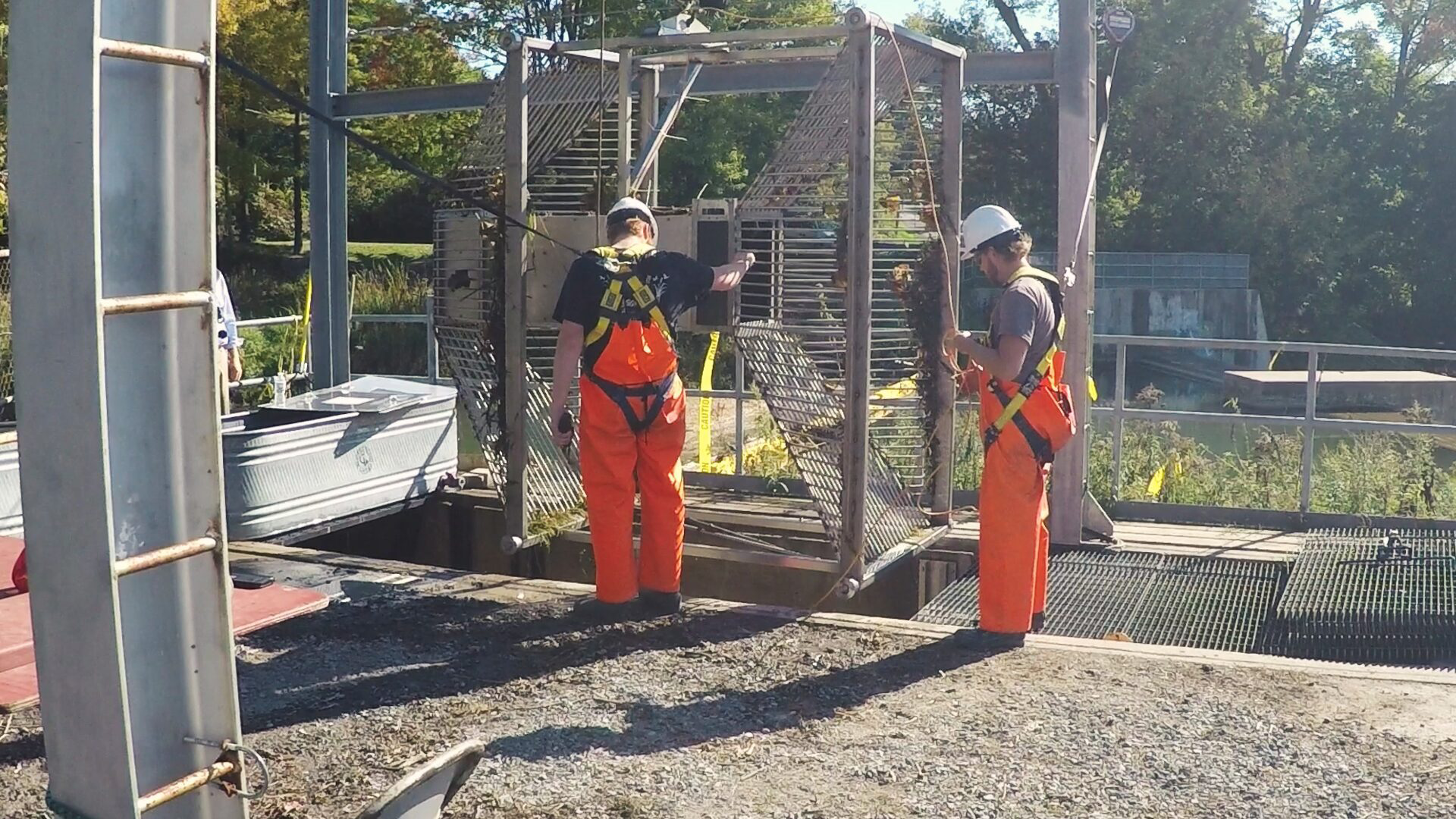Wednesday May 24, 2017
More than 300 Vaki Riverwatchers have been installed to count salmonids in rivers around the world since the late 90s. That number grew in October of 2016 when the Canadian province of Ontario installed its first Riverwatcher fish counter, which is being used to monitor salmonid passage at Corbett’s Dam on the Ganaraska River. The Lake Ontario Management Unit (LOMU) of the Ontario Ministry of Natural Resources and Forestry (OMNRF) funded the purchase and installation of the equipment to collect data on native Atlantic salmon, as well as non-native Coho and Chinook salmon and steelhead. Chinook salmon were introduced into Lake Ontario and the other Great Lakes in the 1960s to control the proliferation of alewife, which were fouling beaches due to large population die-offs. The stockings were wildly successful, and a salmon sport fishery was created. Steelhead/rainbow trout have been introduced all over North America as another popular sport fish.
Although the Ganaraska River is ripe with spawning Chinook salmon and has a robust hatchery program for sustaining this fishery, the OMNRF also seeks to restore the once abundant native Atlantic salmon fishery. Identifying Atlantic salmon has increased in importance recently because of the current and potential reintroduction efforts of Atlantic salmon to Lake Ontario and its tributaries. During the late 19th century, Atlantic salmon stocks in Lake Ontario was extirpated due to the combined effects of poor water quality, changes in the lake ecosystem, and over-fishing. During the last few decades, restoration efforts have led to improvements in water quality and the ecosystem. LOMU biologists are hopeful that these positive changes will help support the Atlantic salmon reintroduction efforts. The Riverwatcher will provide vital information on the population dynamics of Atlantic salmon, as well as other salmonids to help achieve restoration goals in the Ganaraska River, and offer an example for other tributaries to Lake Ontario. The first goal is to identify if the current reintroduction of Atlantic salmon is producing adult spawners in the tributaries of Lake Ontario.
The Riverwatcher can help LOMU biologists document counts of fish passing upstream and downstream, fish condition, species, size, presence or absence of adipose fins (with clipped fish suggesting hatchery origin), presence or absence of external tags, passage timing, and sex. All of this information was traditionally collected by hand using an upstream trap that agencies also used to collect Chinook salmon for hatchery spawning activities. However, these trapping events were few and far between, which left gaps in the fish count data. While the ministry has an electronic counter that they used to fill in the fish count gaps, that counter did not differentiate between the various salmonid species. Specifically, the old counter could not differentiate between a potential Atlantic salmon passage and the other salmonids that migrate through the Corbett’s Dam fish ladder. The Riverwatcher will give them the ability to continue to collect this information 24 hours a day without the need to handle fish, and can provide species-specific data that is crucial for Atlantic salmon restoration efforts. Following the installation of the Riverwatcher, our staff traveled to Ontario to provide training on Riverwatcher operation and data analysis – check out our latest video to see some highlights!

